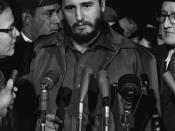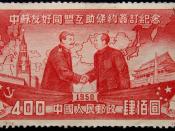In A Dictionary of Sociology, Gordon Marshall defines rebellion/revolution as "Relatively rare but historically important events in which an entire social and political order is overturned, usually by violent means." He continues to say that while a rebellion is only the replacement of one ruling group by another, a revolution also has the new governing elite making fundamental changes. Both the Chinese Revolution of 1949 and the Cuban Revolution of 1959 completely fit the definition of a full revolution. Of course, while revolutions often originally have the best interests of the people in mind, corruption and power madness quickly leave the hosts of the former rulers to infect the "people's" revolutionary.
China had a Nationalist government. The government was a one party dictatorship. Opposed to the Nationalists was the Chinese Communist Party (CCP). This was because the CCP was given no say in the governing of the country. In addition, because the Nationalists' leader, Chiang Kai-Shek, had the CCP forced from membership in the ruling body.
Before they were completely wiped out, the CCP took to the rural areas of the country where they rallied peasant support. The Nationalist party had severely limits to its power because of this opposition and Japanese aggression.
Chiang was constantly trying to wipe out the communists, and because of this he often submitted to Japanese demands. This did not make the people happy, and so they turned to the communists. In 1934, Chiang forced the communists to leave their bases. During what became known as the Long March, Mao Zedong became leader of the CCP. The Japanese continued to take over parts of China, but Chiang ignored them and focused on the communists. Many students and intellectuals protested Chiang's cowardice. Dissatisfaction spread, and the army turned on Chiang. They kidnapped him and released him...


